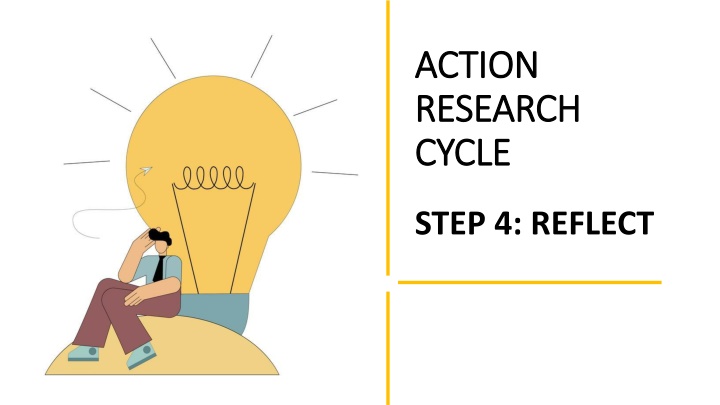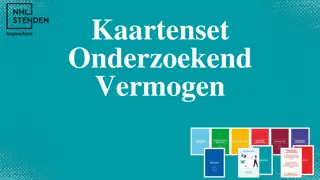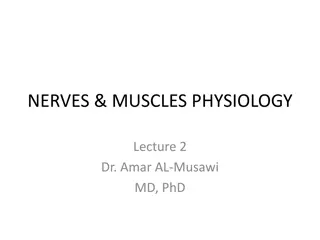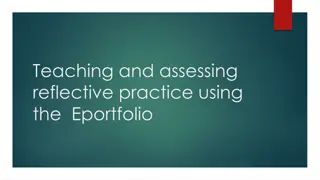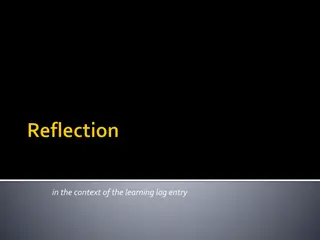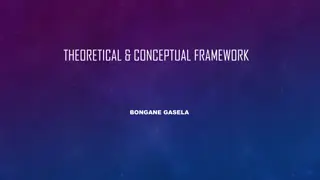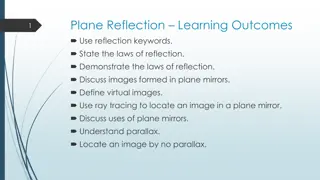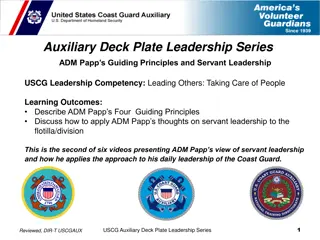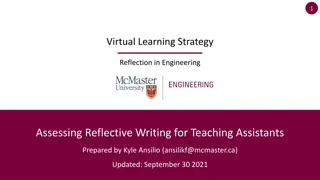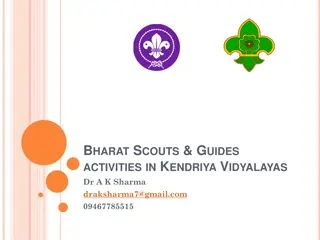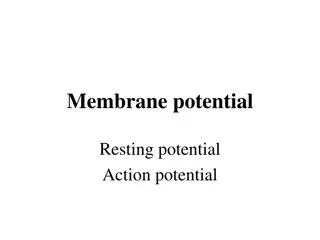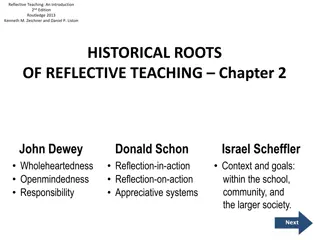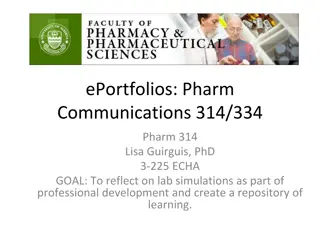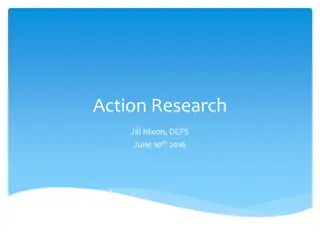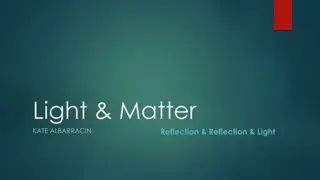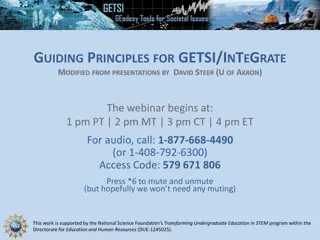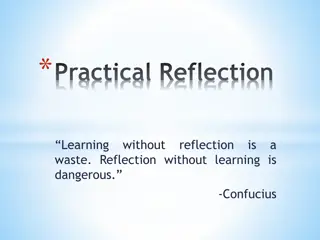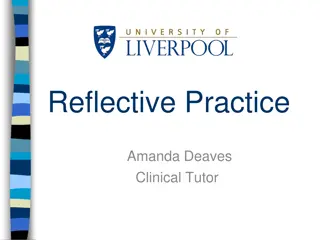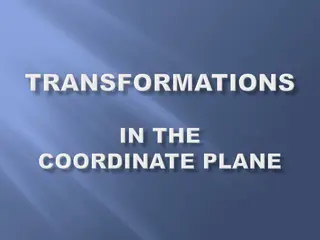Guiding Reflection on Action Research Process
Explore prompts and steps to guide reflection on action research goals, results, beliefs, and experiences. Learn how to make conclusions, plan next steps, and improve the action research process. Reflect on challenges faced, successful strategies, and the impact of beliefs on decision-making in teaching.
Download Presentation

Please find below an Image/Link to download the presentation.
The content on the website is provided AS IS for your information and personal use only. It may not be sold, licensed, or shared on other websites without obtaining consent from the author.If you encounter any issues during the download, it is possible that the publisher has removed the file from their server.
You are allowed to download the files provided on this website for personal or commercial use, subject to the condition that they are used lawfully. All files are the property of their respective owners.
The content on the website is provided AS IS for your information and personal use only. It may not be sold, licensed, or shared on other websites without obtaining consent from the author.
E N D
Presentation Transcript
ACTION ACTION RESEARCH RESEARCH CYCLE CYCLE STEP 4: REFLECT
Presentation outline: Presentation outline: 1. Prompts to guide reflection on action research process, teaching practice, beliefs, values, feelings and experiences? 2. How can teachers make a conclusion and a recommendation for their action research? 3. How can teachers plan the next action research plan based on the first cycle of your action research?
Prompts to guide reflection on action research goals and results Prompts to guide reflection on action research goals and results Prompts to guide reflection on AR goals: Prompts to guide reflection on AR results: What were your expectation, goals, and objectives to do the action research? What motivated or inspired you to pursue this particular action research initiative? How successful was your action research to accomplish you goal or to answer your question? What did you well in your action research process? What was successful? What was not successful? How could you improve your action research process? What did you learn from this action research you have done?
Prompts to guide reflection on steps of doing action research: How did you find your research question? How appropriate was your research question to answer? How have you collected data to inform or improve your teaching practice? Were your data collection methods appropriate to answer your research question? How did you analyze your collected data? Did you analyze your data satisfactorily?
Prompts to guide reflection on steps of doing action research: What challenges have you encountered to collect and analyze your data? Did you try out a teaching strategy? Was it successful? How did you use data to improve your teaching and other practice? What were important aspects and strengths in your action research? Why were they important?
Prompts to guide reflection on your beliefs and feelings Prompts to guide reflection on your beliefs and feelings How did your beliefs and values about teaching affect the decisions made as you did your research? What were your personal reactions to the changes that resulted from your action research? Were they positive or negative? What personal feelings arose from finishing your action research? Were they positive, negative or both?
Make a conclusion for action research Make a conclusion for action research Restate the research question and why it is important. Discuss the important data/findings and explain what they mean. Discuss the strengths and weaknesses of the action research. The conclusion can be often no more than one or two paragraphs.
Make a recommendation for action research Make a recommendation for action research how your findings might be used what should be done differently next time how you should teach in a particular teaching strategy how you might change your teaching practices in light of your results
if you want or need to go further. if you want to try out the same teaching strategy with different students. if you realized that your research question is not main one. Plan your next action research If you think that the first cycle of action research did not give you the satisfactory outcome. If you have still more research questions about the changes in your teaching and students learning.
Cycles of Action Research (Kemmis & McTaggart, 1988) The model shows how action research continue through the cycle if you want or need to do next action research.
Please read more about Step 4-Reflect of Action Research Cycle in the supplementary readings. Source: pp 141-147. Burns, A. (2010). Doing Action Research in Language Teaching: A Guide for Practitioners. NY: Routledge.
THANK YOU FOR YOUR ATTENTION
Reference Reference Burns, A. (2010). Doing Action Research in Language Teaching: A Guide for Practitioners. NY: Routledge. Johnson, A. (2012). A short guide to action research (4th ed.). Allyn and Bacon. Putman, M. & Tracy, C., (2018). Using Strategic Inquiry to Improve Teaching and Learning. SAGE Publications.
